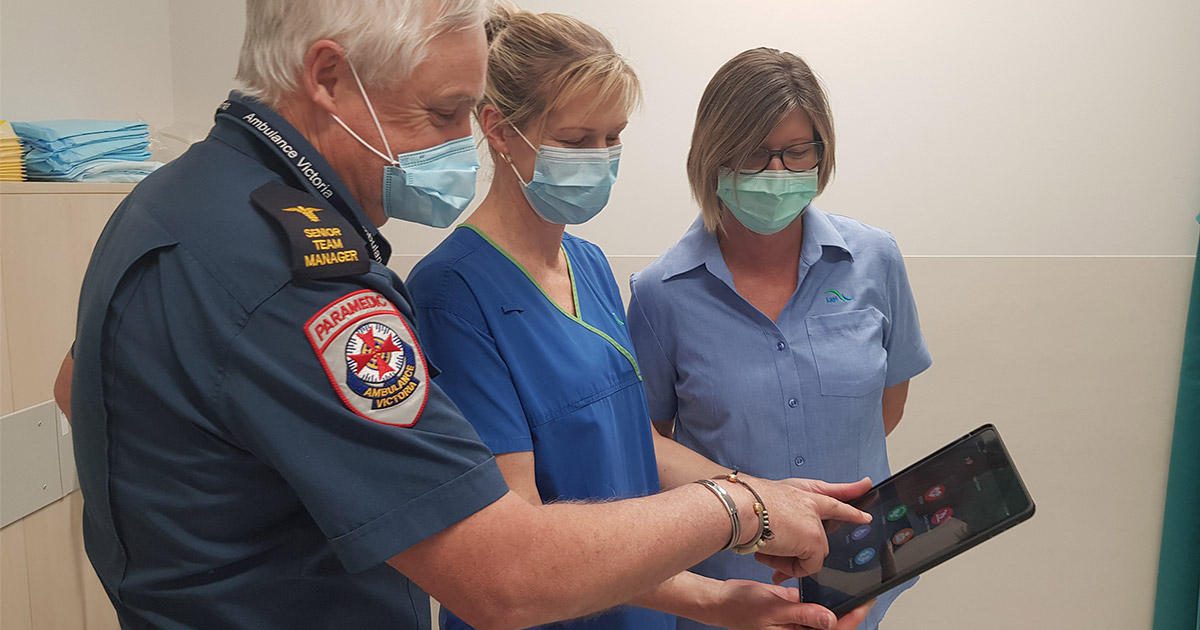Does Your Team Feel Unseen? Close the Leadership Disconnect with 2-Way Communication
Editor's Note: In July 2025, EMS1 and Fitch & Associates released their annual EMS trend survey, What Paramedics Want, proudly sponsored by Pulsara....
2 min read
 Team Pulsara
:
Sep 01, 2022
Team Pulsara
:
Sep 01, 2022

Australian-based healthcare real-world feasibility study finds improved communication and faster patient care timelines when using Pulsara.
Bozeman, Mont., September 1, 2022 — Pulsara, the leading mobile telehealth, communication, and logistics platform that unites healthcare teams and technologies across organizations during dynamic events, announced the publication of the British Medical Journal real-world feasibility study analyzing the effects of Pulsara on care team communication and acute stroke and STEMI patient treatment times. Titled “Real-world, feasibility study to investigate the use of a multidisciplinary app (Pulsara) to improve prehospital communication and timelines for acute stroke/STEMI care,” the study was conducted in Victoria, Australia with pre-hospital and within-hospital clinical teams. As a first-of-its-kind systematic analysis of Pulsara’s efficacy across the whole patient journey for treatment of stroke and STEMI, the study found that utilization of the platform resulted in significant patient treatment time improvements.
“Implementation of the Pulsara digital communication application resulted in faster metrics of the patient arriving at hospital and being at triage when Pulsara was used, as well as patient off ambulance stretcher times for both stroke and STEMI cases,” reported study authors Chris F. Bladin et al. “Hospital metrics for stroke cases also improved significantly with door-to-first medical review and door-to-CT completed more rapidly.”
With cardiovascular disease ranking as a leading cause of death and disability in Australia, the researchers identified prehospital notification to hospital teams and faster assessment and treatment as prerequisites for better outcomes. Nevertheless, the study reported that many healthcare systems are not yet set up for this kind of optimal communication or streamlined patient care.
“Interdisciplinary prehospital communication is however often fragmented with clinicians dispersed geographically, across health services and reliant on multiple separate communication systems, such as radio, phone and paging systems, for the one patient. This disjointed system leads to repetition of documenting clinical details, transmission of incorrect or out of date clinical information and subsequent treatment delays,” the study authors wrote.
Conducted over 12 months, the researchers sought to “undertake a real-world, pilot feasibility study and determine if a secure, digital communication app (Pulsara), operating both between and within health services, could improve the timelines for the different stages involved in the interdisciplinary processes of care for patients with suspected acute stroke or STEMI.” Numerous healthcare systems were involved in the study, including twenty-five ambulance organizations, two hospitals, and multiple clinical teams encompassing paramedics, emergency, stroke/neurology, cath lab clinicians, and radiologists. A total of 604 patients also participated — identified when suspected of acute stroke or STEMI by paramedics and ED clinicians. Moreover, the primary measurements included door-to-treatment for stroke and STEMI patients, with secondary evaluations around ambulance and hospital operations.
When utilizing Pulsara, the study found statistically significant improvements for patients with suspected stroke and STEMI, including shorter time between ambulance loaded and hospital arrival (23 minutes faster for STEMI patients, and 5 minutes faster in stroke cases), faster triage time (3 minutes faster for STEMI and 4 minutes faster for stroke patients), shorter times on the ambulance stretcher (5 minutes less in STEMI cases and 8 minutes less for stroke patients), and faster door-to-CT times (44 minutes faster).
“Our research provides evidence that Pulsara can be used as a single digital communication system to enhance the emergency management of patients across multiple conditions,” concluded study authors Chris F. Bladin et al. “Strong uptake suggests the clinical utility of such a communication system. Patient-centred care needs a patient-centred communication system incorporating patients identified in the community by first responders, then assessed and treated by multiple clinicians within the community and hospital setting.”
For more details and access to the full publication, download the research study here.
About Pulsara
It’s about people. During the most critical moments in life, Pulsara unites distributed teams and fragmented technologies as dynamic events evolve on a scalable communications and logistics platform, improving the lives of people in need and those who serve them.
We envision a world where needless suffering is eliminated because communities can unite and communicate without friction. Customers report per-facility reductions in treatment between 22% to 68% when using Pulsara, the evidence-based standard of care. For more information, visit www.pulsara.com.
###
Press Contact:
Hannah Ostrem
Vice President of Marketing, Pulsara
Hannah.Ostrem@pulsara.com
(877) 903-5642

Editor's Note: In July 2025, EMS1 and Fitch & Associates released their annual EMS trend survey, What Paramedics Want, proudly sponsored by Pulsara....
![[PRESS RELEASE] Published Research Finds Up to 31% Faster STEMI Treatment Times in Rural Hospital Setting with Pulsara](https://www.pulsara.com/hubfs/_1_website-page-blog-assets/pulsara-hosp-teams-assign-cardio-stemi-rn-1200x701.jpg)
Published research shows how using Pulsara, alongside standardized field activation and a focus on stakeholder relationships, improves STEMI care and...

Editor's Note: In July 2025, EMS1 and Fitch & Associates released their annual EMS trend survey, What Paramedics Want, proudly sponsored by Pulsara....